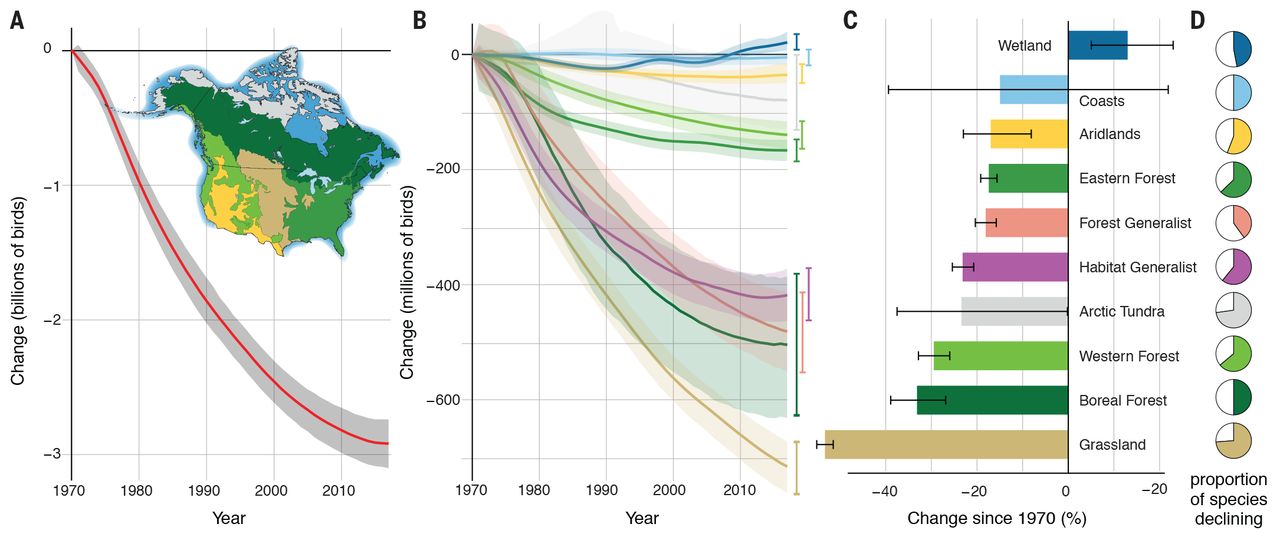Science: Decline of the North American avifauna
分会秘书长:北京林业大学生态与自然保护学院 丁长青/100083, Tel 010-62336869, Email:cqding@bjfu.edu.cn
DOI: 10.1126/science.aaw1313
https://science.sciencemag.org/content/early/2019/09/18/science.aaw1313

Fig. 1 Net population change in North American birds.
(A) By integrating population size estimates and trajectories for 529 species , we show a net loss of 2.9 billion breeding birds across the continental avifauna since 1970. Gray shading represents ± 95% credible intervals around total estimated loss. Map shows color-coded breeding biomes based on Bird Conservation Regions and land cover classification .
(B) Net loss of abundance occurred across all major breeding biomes except wetlands .
(C) Proportional net population change relative to 1970, ±95% C.I.
(D) Proportion of species declining in each biome.
